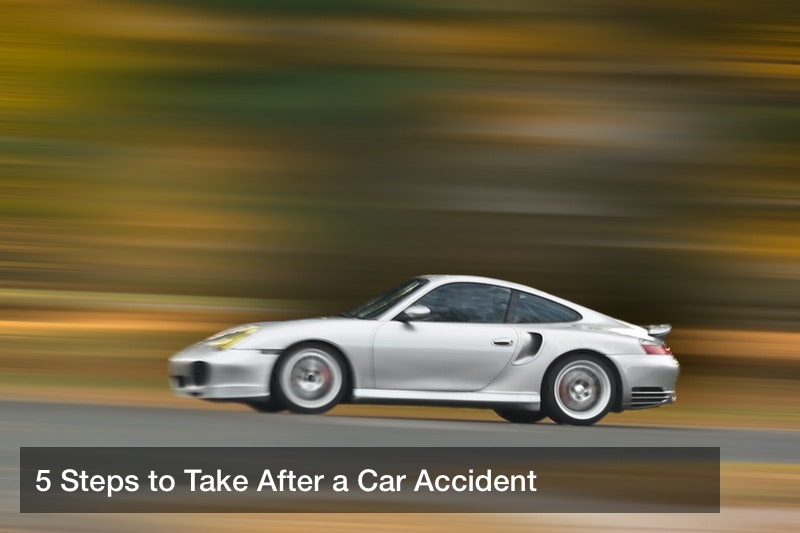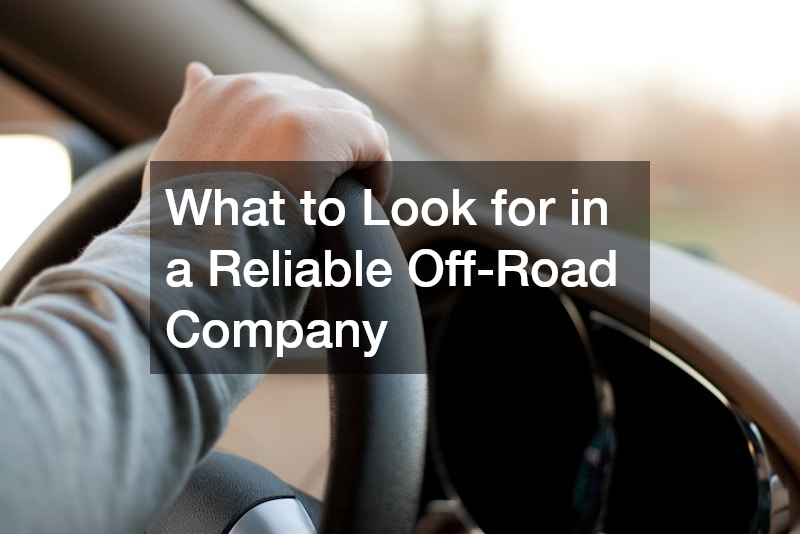

Unlike in other countries, plenty of people in America own cars. In fact, there are enough cars that you could literally give one to each child and adult. Of course, this doesn’t mean that everyone has a vehicle. Plenty of folks don’t have their own vehicles, while others own two, three, or more.
With so many cars around, it’s not surprising that crashes happen on a daily basis. Fortunately, most collisions aren’t serious or fatal. Still, they can rack up both property damage and some personal injuries. That’s why it’s important for every driver or passenger to follow 5 steps to take after a car accident.
What are the 5 steps to take after a car accident? They fall under several categories. The first of the 5 steps to take after a car accident follows safety and by-the-rule decision-making guidelines. The second of the 5 steps to take after a car accident focuses on wellness and healthcare.
Moving on, the third of the 5 steps to take after a car accident considers documentation and evidence. The four of the 5 steps to take after a car accident involves legal considerations. What is the fifth and last of the 5 steps to take after a car accident? It has to do with something very critical: repairing or replacing a vehicle that’s been damaged.
If you’ve never been in a crash before, you can count yourself lucky. Hopefully, you never find yourself needing the 5 steps to take after a car accident. But if you do, remember what you read below. It’s practical, pragmatic advice that can keep you out of hot water and get you damages for your injury or property damage faster.
Step 1: Get Help in All Forms

After getting in a car wreck, you may feel dazed, shocked, angry, or scared. Try to keep yourself as calm as possible and get out of the vehicle if you can. If you’re not sure you can safely move on your own, wait for someone to find you.
Let’s say for the sake of argument that you’re not hurt too badly and you can get away from your vehicle. At that point, you’ll want to first contact the police or local authorities by calling 911. The police and probably an ambulance or even firefighters will come to the scene, depending on where your collision took place. For instance, if it was in a parking lot, only the police are likely to arrive unless you say the accident was particularly catastrophic. On the other hand, if your accident happened on a busy roadway, your phone call will probably precipitate a number of emergency responders.
While you’re waiting for them to arrive, you may want to start doing some things to help yourself. First, exchange information with the other driver. Do not say that you were at fault or try to accuse the other driver of anything. It’s best for you not to say anything that could be incriminating later or make you seem like you were belligerent or nasty. Instead, just give the other driver your insurance information, driver’s license number, license plate information if it’s not on your insurance card, phone number email address, and full name.
Sometimes, drivers also like to exchange home addresses, but this is not a hard and fast rule. For every attorney who would recommend giving out private addresses, another would suggest you avoid it because it’s unnecessary and may put you at risk if the other driver is untrustworthy.
Next, look around and see if any witnesses have gathered at the scene. These might be people who stopped directly after they saw the crash or ones who stopped later to potentially give medical assistance to injured crash victims. Get their names, phone numbers, and email addresses if at all possible. Why? Later on, your insurance provider or even lawyer may want to get in touch with them. Plus, if you try to submit an insurance claim and it’s denied, witness testimony can help you get the denial appealed. Also, lawyers occasionally will need to get information from witnesses who either were there at the time of the wreck or immediately afterward.
Since you probably have a smartphone on you, use it to take pictures of the scene. What should you photograph? Definitely document any physical harm that you see, such as to the cars, signage, lamp posts, barriers, trees, parked vehicles, or anything else. Do this before there’s any time for damage cleanup. Once cleanup begins, you won’t have the chance to capture real-time photographs of what the site looked like when it was fresh. Though you may never use these photos or need most of them, they can prove handy in case you do require any type of visual evidence to prove something like flagrant negligence on the part of the other driver. Don’t forget to use your video camera, particularly if you feel like you need to describe the scene while you’re filming it to give the context of the visuals.
Finally, be sure that you help your passengers. Many people forget that passengers can be shaken up even if they’re uninjured. Kids might be very scared. Pay attention to their needs so everyone can stay as relaxed as possible until the police and responders get on the scene.
Step 2: Seek Medical Care

As noted previously when overviewing the 5 steps to take after a car accident, the second one revolves around making sure that everyone who’s hurt gets treated. Even if you think that you’re not injured at all, you may still want to get a once-over by the first responders. Many people who have been in car crashes feel no discomfort or pain but have been injured seriously. Why? Shock can numb pain receptors, as can a heightened rush of adrenaline during a stressful time.
Now, you might be reluctant to hop into an ambulance, especially if you don’t have decent health insurance that will foot the bill. If you have to wait to get treatment, at least make an appointment with your physician over the coming day or two. You may also want to just pop into an urgent care center or emergency room to get checked out.
The reason for seeking medical care is two-fold, really, First, you want to get any problems diagnosed as fast as possible. Without a diagnosis, you may end up making your situation much worse. Take the case of a concussion, for instance. Ignoring a concussion can wind up costing you dearly because you could end up suffering more damage. So get an examination, even if it costs you something out-of-pocket. Hopefully, your insurance will help cover the cost of this medical appointment if it exceeds your deductible.
What’s the second reason for seeking medical care? To be perfectly honest, you want to prove that if you’re injured, your injury actually happened during the accident and not afterward. Insurance companies frequently try to argue against crash claims by suggesting that injured drivers and passengers didn’t get hurt during the collision, but instead got hurt in the following days. Having a doctor’s report dated on the same date as the crash or the following day can help you prove that your medical issues were directly linked to the vehicular collision and not something else.
Remember: Immediate medical care is critical as one of the 5 steps to take after a car accident. Oh, and be sure to ask your passengers to get themselves checked out, too. Many people try to “tough it out” when they shouldn’t or don’t need to.
Step 3: Get in Touch With the Insurance Company and Exchange Information

Your auto insurance company will want to know about your crash within a few hours after it occurs. Some drivers will even call their insurance agents while they’re at the scene, especially if they’re working with a local provider and it’s during normal business hours.
When you contact your insurance provider, just give them the facts. Try not to get too emotional or point fingers. The insurance agent will ask you many questions, so be sure to have all the information that you gathered on hand. You may also be asked to submit evidence, like your photographs or videos that you collected at the site.
Be careful when giving too much information upfront, though. Insurance adjusters are not in the business of paying out large settlements. They probably won’t quibble too much if your claim is going to be less than one thousand or two thousand dollars. But if you’ve been seriously hurt, you can bet that you’ll probably get some pushback.
This is where you might want to start thinking about the next step in the 5 steps to take after a car accident, which pertains to bringing in legal professionals to work on your case. In general, a small parking lot crash doesn’t require the help of an attorney unless your property damages were somehow sky-high. However, larger crashes that cause significant injuries that you might spend months, a year, or even longer to treat can be tough to negotiate on your own. At that point, you’ll be glad to reach step 4.
Step 4: Seek Legal Representation

Legal professionals, like an auto accident lawyer, will usually offer free consultations with victims of serious wrecks and their family members. If your injuries were severe, you might be wise to connect with one of these types of personal injury lawyers sooner rather than later. Some people even recommend that you contact a lawyer before calling your insurance carrier or agreeing to give an interview with an insurance adjuster.
Should you just use any lawyer that you’ve worked with before, such as the firm of workers compensation attorneys who helped you when you got hurt while working? The answer is usually “no,” unless those attorneys have extensive experience working for fair treatment of crash victims. Every lawyer has his or her own preferred practice area. When you need one who deals with accidents day-in and day-out, don’t think that just any attorney will do.
This leads to another point, which is, “What if I am the one to blame? What if I was even charged with a crime, such as driving under the influence?” In that case, you’ll want to speak with a knowledgeable DUI defense attorney. Unlike personal injury lawyers, criminal defense legal representatives might ask you to pay for your first meeting. You might be able to find one willing to talk to you for free, though, and it never hurts to ask around. Having a DUI on your record can make life hard for you, and you want the best attorney you can afford to defend you in court.
Step 5: Repair Your Car

There’s one thing we haven’t talked about with the 5 steps to take after a car accident: What do you do with your car? If you’re lucky, you might have only suffered minor damage, such as to the windshield. While pricey, a window repair may be fully or partially covered under your car insurance plan, leaving you with a perfectly drivable set of wheels just a few days after the collision occurred.
Still, not all crashes end up with dings and dents. The front of your car might have been crushed. The passenger door could be off the hinges, or the roof might have been totally swiped off. In these cases, you’ll need to get to an auto body repair shop. If your insurance company or the at-fault driver’s insurance company is paying to fix the problem, such as an engine replacement or heating system repair, the insurance carrier may set up the appointment at a preferred technician’s location.
Be sure to ask if you have a say in where your car is fixed, especially if your car requires special consideration. For example, some foreign-made cars should be handled by technicians with special expertise. Make this clear with the insurance agent upfront, knowing that you might end up with some pushback.
If you need to wait for your car to get back to health, or you have to buy a whole new car because yours was totaled, ask about getting reimbursed for a car rental. Car rental fees can add up quickly, and you’ll want to make sure they’re taken care of so you are not left footing a bill you shouldn’t have to cover.
Yes, getting in a car crash can be a tragic, awful experience. By following the 5 steps to take after a car accident, you can put the accident behind you. Put yourself in a better position to get a decent settlement if your injuries end up being very serious and costly by following these steps.



